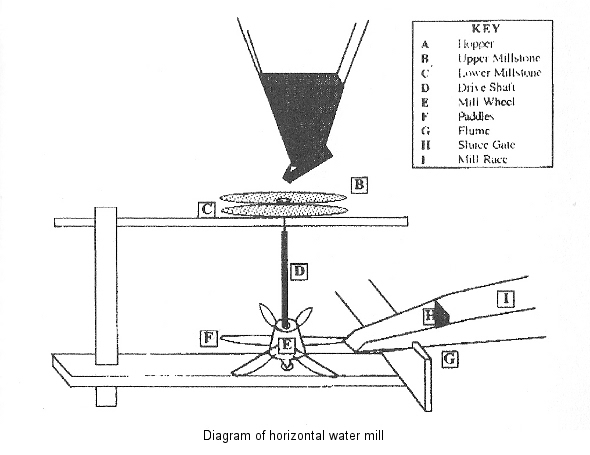Journal Volume 2 1995
Horizontal Water Mill at Newcastle (continued/2)
A number of horizontal water mills have been found throughout Ireland and have remained preserved in the wet bog lands and river sides like the one at Newcastle. All of the Irish horizontal water mills date from 630 AD to 930AD give or take ten years as determined by the most recent scientific method of tree-ring growth known as dendrochronology perfected by Mr. M. Baillie of Queen's University, Belfast.

In the Irish National Heritage Park near Wexford you can see in working order a reconstructed horizontal water mill based on the example of the Cloontycarthy Mill in Co. Cork dated 833 AD. The later upright water mills which work on the same principal as horizontal mills are more familiar to most of us and can still he seen in many towns and villages throughout Ireland.
The same Little Vartry river that provided the water power for the horizontal mill also provided in more recent times the power for upright water mills at Millbrook House and Oaklawn in Newcastle Village. The track of the mill race can still be traced in the field adjoining the churchyard and also in the field on the other side of the road opposite the old castle ruins.
An extract of the Corn Tithes of Newcastle for the year 1792 tells that the miller John Doyle at Millbrook was required to pay four shillings for one acre of barley and six shillings for two acres of oats. Only sound oak timber that would not rot in water was used in the construction of water mills.
History relates that some of the best oats in these Islands grew around Newcastle. In documents relating to Ireland 1285 to 1292 we read that £60 of silver was to be expended on carpenters to cut down oak out of the woods of Newcastle and Glencree and transport it by sea to build the Queen's Castle of Haresford in Wales. The Queen was Eleonora daughter of Ferdinand III of Spain and wife of Edward I of England.


